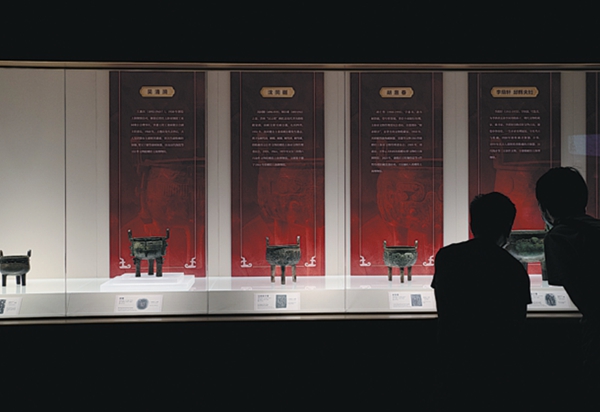

Pan's only heir was his adopted grandson Pan Chengjing who died young. So Ding Suzhen, wife of Pan Chengjing, took it upon herself to safeguard the family treasures. To solidify her sense of purpose, Ding changed her name to Pan Dayu, a name taken from one of the bronze cauldrons, Dayu Ding.
When Japanese planes were bombing Suzhou in 1937, Ding hid the bronze treasures in a space underneath her living room with the help of two loyal servants.
Though the Japanese repeatedly raided the Pan house for the famous collection, they never found it.
In 1944, Pan Dayu moved the bronze artifacts to a small room and hid them behind used furniture and ragged clothes.
Shortly after Shanghai was liberated and the People's Republic of China was established in 1949, she wrote to the cultural administration of East China in 1951, announcing the family's decision to donate the two treasured bronze cauldrons to the country.
It took an entire day for the two bronze cauldrons to be transported by train from Suzhou to Shanghai. At the railway station, they were lifted onto a big cart and pulled by hand to the antiques administration office.
The two cauldrons were the most prominent exhibits at the Shanghai Museum when it opened in 1952. Dayu was moved to Beijing in 1959 for the opening of the new National Museum of History.
To mark Pan Dayu's 100th birthday in 2004, the museum held a special exhibition in her honor and Dayu Ding was returned to the museum. With her son and daughter supporting her, Pan Dayu walked around the two bronze cauldrons.
"The two brothers have met again. Not one thing about them has changed. How wonderful is this!" said Pan in the Suzhou dialect. The centenarian passed away peacefully in Suzhou in 2007.
At the opening ceremony of The Perpetual Prosperity exhibition on June 19, Pan Yuyi, grandson of Pan Dayu, again compared the two cauldrons to brothers.
"They went through fear and turmoil together during the war, and started new lives in museums," Pan Yuyi says.